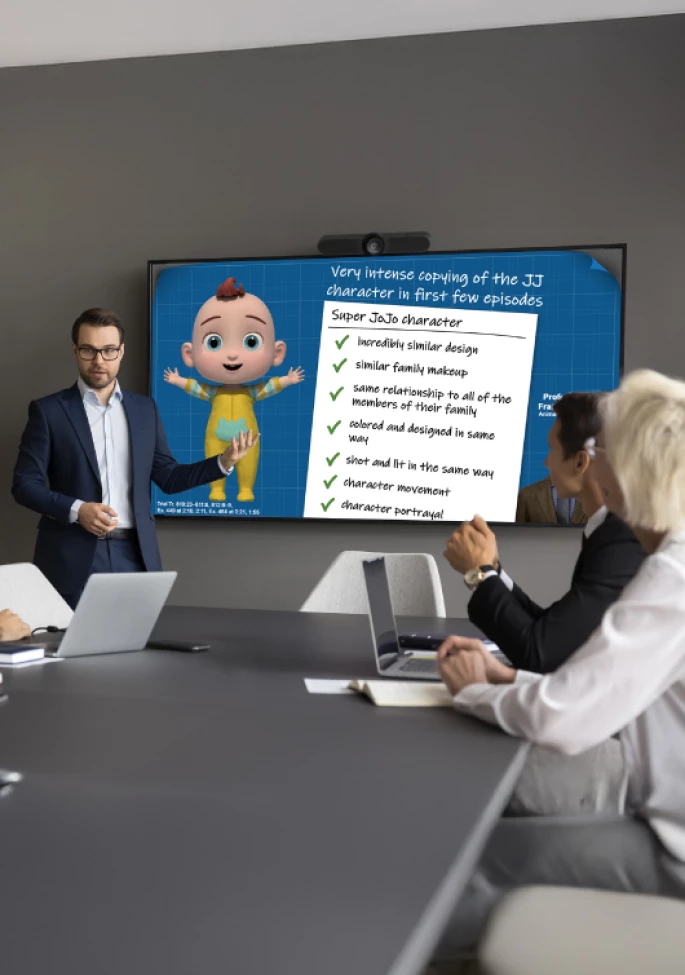In the hopes of piquing the interest of jurors and minimizing hardship requests, more and more judges are encouraging parties to make “mini-openings” prior to voir dire. In fact, California courts require judges to “allow a brief opening statement by counsel for each party prior to the commencement of the oral questioning phase of the voir dire process.” (CCP 222.5d).
Typically, judges restrict these mini-openings to five or seven minutes, but that is more than enough time to use them to your advantage. Even in jurisdictions that only allow the parties to read a brief statement of the case, the same advantage can be garnered.
All it takes is a cleverly crafted statement that downplays your case strengths and beefs up your opponent’s case. We are essentially recommending that you “throw” your mini-opening statement and here is why:
How the Mini-Opening Informs Voir Dire
The purpose of voir dire is to identify and remove your worst jurors, while hiding your best jurors so that opposing counsel does not get them removed from the panel. Thus, eliciting bias and obtaining cause challenges should be the primary objective. Eliciting bias will identify your riskiest jurors and enable you to prioritize your peremptory strikes for those deemed most dangerous. Ideally, however, voir dire should lead such jurors to admit they cannot be fair once they have voiced a potential bias or formed an opinion of the case that disfavors your client, thereby saving you those strikes. This second part is key when it comes to the mini-opening.
The Counter-Intuitive Ways to Benefit from Your Mini-Opening
1. Preview Your Case Weaknesses to Jurors
To identify the jurors who will never be able to look past the weaknesses in your case, it is important to preview those weaknesses in voir dire. The mini-opening is the perfect opportunity to present the worst facts in your case so you can discover what jurors think about those facts and how much those facts would impact their decision. This could include, for example, documents admitting knowledge of a potential product defect, missing or destroyed records, a company witness who has lied, or a subsequent remedial measure that you know will be admitted. Bringing these issues up in the mini-opening can elicit such a negative reaction from certain jurors that they will admit they have already formed a negative opinion of your client or your case. In most jurisdictions, once a juror has formed an opinion on a matter in controversy, it is grounds for a cause challenge.
2. Don’t Be Afraid of Juror Responses
The biggest pushback we receive from lawyers on this technique comes from their fear that jurors will say negative things that will influence other jurors. It is a reasonable fear to have, but it is one we ultimately believe is unsubstantiated. First, the decision that lawyers are worried about influencing the verdict is so far beyond the point of voir dire that any effects from comments made in voir dire will fade away with time. The things that other jurors say at this stage are likely to be long forgotten by the time the juror makes a decision in the case. Second, most beliefs—especially strong ones—are deeply engrained and resistant to change. It is hard enough for jurors to change other jurors’ minds during deliberations by providing arguments supported by actual evidence. A juror expressing a belief, often without providing any evidence or facts to support it, is very unlikely to influence the beliefs of others in any way.
3. Reserve Your Strong Points for Trial
In addition to previewing case weaknesses, it is just as important to withhold your strongest facts. As much as you may want to tell jurors that the product has been approved by the FDA, or that the plaintiff misused the product, resist the temptation. There will be plenty of time to argue your case and win over the jury in opening statement and closing arguments. Remember: the purpose of voir dire is to remove your worst jurors from the panel and hide your best jurors. If you put your best facts out there during mini-opening, your best jurors are likely to announce that those facts win the case for them.
For example, one attorney of a co-defendant spent hours preparing his mini-opening, outlining the strengths of the case, and thinking about how he would show the jurors that his client was in the right. You cannot blame him—that is at the heart of any lawyer’s duty, and this was a young, second-chair attorney who was eager to show off his advocacy skills to the client and senior partner. The attorney proceeded to deliver a powerful mini-opening, explaining that the product had been thoroughly tested and approved by the FDA, that scientific research supported the defense position, and that the plaintiff’s cancer was most likely genetic, given her extensive family history of the disease.
Though he and his client felt good after sitting down, it quickly backfired when the plaintiff attorney began his voir dire. “Does anyone here think this is just another frivolous lawsuit? Is my client starting behind in this case before we even start?” he asked. Almost immediately, a slew of hands went up, with jurors saying things like, “Well, they said she has a family history of cancer, so I don’t believe you could prove it was caused by the product,” and “Well, if the product was approved by the FDA, then it must be safe.” Opposing counsel was soon able to get these jurors to say they had already formed an opinion in the case, and that the defense was starting with a leg up in their mind. Then, one by one, we saw our best jurors get excused from the panel.
4. Maximize Cause Challenges
To illustrate how effective this tactic can be, in one recent case, we advised the defense attorney to emphasize the weaknesses in the case and withhold the strong points during his mini-opening. After opposing counsel delivered a five-minute argument alleging that documents would show the company knew the product was defective and that it caused the plaintiff’s debilitating injuries, our client stood and read a brief “vanilla” version of the defense position—to summarize, “The company refutes these allegations and claims the plaintiff is not entitled to damages.”
What ensued was a very uncomfortable, but very valuable, two hours. During the plaintiff’s voir dire, jurors berated the company, accused it of being the typical corporation that puts profits over safety, and described the company CEO and his lawyers as “slick snakes.” They expressed how sorry they felt for the plaintiff and how awful it was that the company withheld important information from her. It was tough to hear, and our trial team struggled to keep their heads up over the lunch break, but I told them to wait for it. Just wait.
After lunch, the smiles on our opponents’ faces quickly faded when they realized they were out of time, and not a single juror said anything that would warrant a plaintiff cause challenge. Plaintiff’s counsel had almost no intel to assist him in exercising peremptories, and even jurors who expressed some anti-lawsuit sentiments said they could keep an open mind because “this case didn’t sound like one of those frivolous suits.” Once the defense got up to begin examining jurors, our opponents’ faces turned to anger. Each of those jurors who said such awful things about our client, and each of those who expressed such sympathy for the plaintiff, ultimately said that they could not be fair and impartial to the defense—obvious grounds for a cause challenge.
To add insult to injury, the plaintiff’s attorney was given the opportunity to try to rehabilitate some of those jurors. Hilarity ensued when he began arguing, “What the attorneys say isn’t evidence, so if we can’t prove everything I alleged in our brief opening, could you side in favor of the defendant?” Jurors quipped, “So are you telling us what you said wasn’t true? Are you telling us you don’t have any evidence to back that up? Then why did you tell us that?” Now, it was the opposing counsel’s turn to feel uncomfortable. After some hemming and hawing, he sat down.
All in all, our client was able to get 27 jurors excused for cause, leaving only those jurors who did not express negative opinions of our case or client, even after hearing our weak position and the plaintiff’s strong case. Those were the jurors who were truly open-minded, and who we knew we could easily win over once we delivered a powerful opening statement that explained all the evidence that supported our case.
“Throwing” Your Mini-Opening: Waiting Is Worth It
As uncomfortable as it is to hear jurors talk negatively about your case and client, it is essential to make sure you identify your worst jurors during voir dire and get them removed from the panel. To do that, you need to preview your case weaknesses and withhold your strengths. Doing so will bring the bad jurors out of the woodwork.
Think about it: would you rather have those jurors say those terrible things now, or in the jury deliberation room? The more negative things they say about your case and client during voir dire, the more likely they will get kicked off the panel for cause. It might be a bitter pill to swallow, but its effects will be worth your while.





